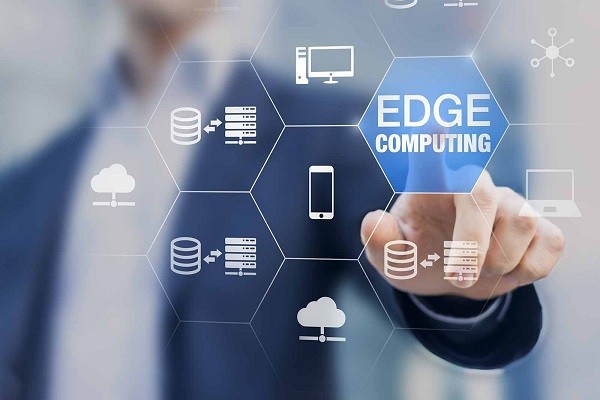Last Updated on May 9, 2025 by Jim C.
Edge computing brings data processing closer to the source, improving efficiency and reducing latency. In today’s digital age, where data generation and consumption is at an all-time high, traditional cloud computing models may struggle to meet the demands for real-time processing.
This is where edge computing comes into play, as it enables the processing and analysis of data closer to its source. By bringing computation capabilities closer to devices or sensors, such as smartphones, IoT devices, or industrial machinery, edge computing minimizes the need for data to be transported back and forth to a central server or cloud data center.
As a result, it reduces the latency and bandwidth requirements, ensures faster response times, and enables real-time decision-making. We will explore the concept of edge computing, its benefits, and potential applications across various industries.
What Is Edge Computing?

Edge computing represents a paradigm shift in how data is processed and managed in the digital age. But what exactly is Edge Computing?
Definition
Edge Computing is a distributed computing model that brings computation and data storage closer to the location where it is needed, improving response times and saving bandwidth.
Key Concepts
- Decentralized: Shifts computing resources from centralized data centers to local devices.
- Low Latency: Minimizes delays by processing data near the source, enhancing real-time applications.
- Bandwidth Reduction: Reduces the need to transmit data to centralized servers, conserving network resources.
Benefits Of Edge Computing
Edge computing brings data processing closer to the source, reducing latency and enabling real-time data analysis. This technology enhances efficiency, security, and reliability, making it ideal for IoT devices and applications that require quick, actionable insights at the edge.
Edge computing brings numerous benefits to the table, making it a game-changer in the world of data processing. By bringing data processing closer to the source, edge computing allows for faster analysis and decision-making. It enables companies to harness the power of real-time data, paving the way for improved efficiency, responsiveness, and overall business performance.
Low Latency
One of the key benefits of edge computing is low latency, which is the delay between a data request and the response. Unlike traditional cloud computing, where data needs to travel long distances to reach the data center, edge computing eliminates this time-consuming journey. By processing data locally at the edge, latency is significantly reduced, ensuring a near-instantaneous response. This is especially crucial for applications that require real-time data analysis and quick decision-making, such as autonomous vehicles or industrial IoT systems.
Bandwidth Optimization
Another advantage of edge computing is bandwidth optimization. With the exponential increase in data generation, transferring vast amounts of data to the cloud can strain network resources and lead to congestion. Edge computing addresses this challenge by minimizing data transmission to the cloud. By processing and filtering data at the edge, only relevant information is sent to the cloud, reducing bandwidth usage and optimizing network resources. This not only improves operational efficiency but also reduces costs associated with data transfers and storage.
Moreover, edge computing enables organizations to conduct real-time analytics on the collected data, allowing them to gain valuable insights and respond swiftly to changing market conditions. By bringing processing closer to the source, edge computing empowers businesses to make data-driven decisions instantly, boosting their competitive edge and driving innovation.
Challenges And Considerations
Implementing edge computing brings about a range of challenges and considerations that organizations must address to ensure its successful deployment. From security concerns to scalability, each aspect plays a crucial role in leveraging the benefits offered by edge computing.
Security Concerns
Security remains a paramount concern when it comes to edge computing. Protecting sensitive data at the edge and safeguarding against potential breaches is essential to maintain the integrity and confidentiality of information. With computing resources distributed at the edge, organizations must implement robust security measures to safeguard the data throughout the entire processing pipeline.
One way to enhance security is through data encryption. By encrypting data at the edge, organizations can ensure that even if it is intercepted, it remains unreadable to unauthorized parties. Additionally, implementing authentication protocols and access controls helps to prevent unauthorized access and strengthen overall system security.
Scalability
Scalability is another crucial consideration when implementing edge computing. Ensuring that the infrastructure can scale seamlessly to accommodate increasing workloads and data processing requirements is essential for effective edge computing implementation. As the amount of data generated at the edge grows, organizations must be prepared to handle the increased workload without compromising performance.
Incorporating flexible and scalable hardware and software solutions is key to achieving scalability in edge computing. This includes using hardware components that can handle high processing loads and software that can efficiently allocate resources based on evolving demands.
Moreover, distributing workloads effectively across edge devices is crucial to prevent bottlenecks and ensure efficiency. This may involve implementing load balancing techniques or utilizing edge computing frameworks that can intelligently allocate tasks to different edge nodes based on their capacity and proximity to the data source.
Future Of Edge Computing
Edge computing is revolutionizing data processing by bringing it closer to the source. This technology reduces latency and enables real-time decision-making, making it an essential part of the future of computing. With the increasing demand for IoT and AI applications, edge computing is set to play a crucial role in optimizing data processing and enhancing user experiences.
The future of Edge Computing looks promising with various emerging trends and its significant impact on multiple industries.
Emerging Trends
Edge Computing is witnessing an increase in real-time data processing capabilities.
Industry Impact
Industries are leveraging Edge Computing for faster decision-making and improved operational efficiency.
Frequently Asked Questions
What Is Edge Computing?
Edge computing refers to processing data closer to its source rather than in a centralized data center.
Why Is Edge Computing Important?
Edge computing reduces latency, enables real-time data analysis, and minimizes network traffic, enhancing overall efficiency.
How Does Edge Computing Work?
Edge computing involves deploying mini data centers, known as edge servers, closer to the data source for faster processing.
What Are The Advantages Of Edge Computing?
Edge computing offers improved performance, enhanced security, reduced bandwidth usage, and better reliability for critical applications.
What Industries Benefit From Edge Computing?
Industries such as healthcare, manufacturing, transportation, and IoT leverage edge computing for real-time insights and improved operational efficiency.
Conclusion
In a data-driven world, edge computing offers fast, efficient processing. Embracing this technology can revolutionize industries and enhance user experiences. With data processing closer to the source, edge computing ensures low latency and improves overall performance. It’s a game-changer in the digital landscape, shaping the future of technology.

